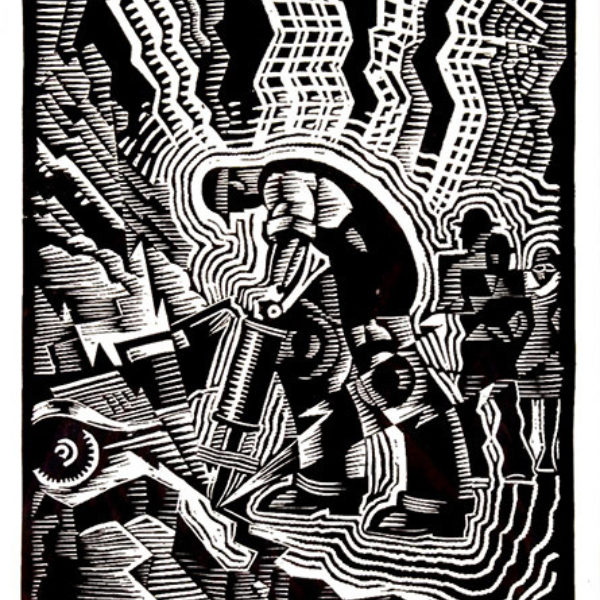
Charles Turzak
b. 1899, Streator, IL - d. 1986, Orlando, FL
Charles Turzak was born August 20, 1899, in Streator, Illinois, the third child and only son of Czechoslovakian immigrant parents. His father was a coal miner who worked long days, so many rural chores occupied Turzak’s boyhood years. He escaped his duties to do what he enjoyed most: carefully carve miniature animals from peach seeds, which he would sell for pennies.
During his youth, Turzak learned woodworking from a neighbor, an English cabinet maker, and he apprenticed making violins soon after. He drew cartoons for his school's yearbook and sale bills for local merchants. In 1920, Turzak won a cartoon contest sponsored by the Purina Company, in St. Louis, Missouri, which helped him earn entrance to the School of the Art Institute of Chicago (SAIC). There, he excelled in drawing and woodcarving, and was awarded membership in Delta Phi Delta, an honorary art fraternity. He supported himself through freelance advertising, selling insurance, and teaching a class in woodcut and wood engraving at the Academy of Fine Arts. Turzak graduated from SAIC in 1924.
By the late 1920s, he gained public attention from exhibiting and selling prints of Northwestern University and Chicago landmarks such as the Chicago Water Tower, Tribune Tower, Buckingham Fountain, as well as watercolors of steel mills, boats, harbors, skylines, woodlands, parks, and still lifes. In 1929 he traveled to Europe to study the master painting firsthand, visiting England, Germany, Czechoslovakia, Austria, and France. He filled sketch books with drawings of the streets and countryside, flowing watercolor studies of people, markets, castles, churches, bridges, a carnival at Munich, even his parent’s home, Spisska Nova Ves. He returned to the United States just as the Great Depression set in.
The Friedman collection features a number of works from this period: Lincoln Park depicts a line of women with babies in strollers set against the animal displays at the zoo—a witty comment perhaps, about who is watching whom. North Bank of the Chicago River highlights the city’s industry—with graphic cranes in the foreground that line the river and represent the great effort to fill the massive Merchandise Mart building on the other side.
Turzak is also well known for his woodcuts biographies of notable Americans. His first edition on Abraham Lincoln sold so well at the Century of Progress that it supported Turzak through the fair and the Depression. He followed it with Benjamin Franklin: A Biography in Woodcuts, which was accompanied by text written by his wife, Florence Turzak. His series of ten prints, History of Illinois in Woodcuts, 1934, in the Friedman collection, was made at the height of the Depression, and is considered to be a turning point in his career. Turzak clearly learned from his previous success: three woodcuts from the Illinois series feature images of Lincoln—one shows him as a muscled lumberjack wielding an axe; another captures him reclining and barefoot, while reading his law books; and the third memorializes his Springfield home. The interest and notoriety of this series helped to establish Turzak’s commercial career in advertising.
Turzak exhibited at the Art Institute of Chicago in 1940, and worked for the Works Progress Administration, completing a mural for the Chicago Post Office. From 1942, he was art director of Today's Health Magazine. He lived in Chicago until 1958, and then moved to Orlando, Florida. During the 1950s to 1970s, he painted in several abstract styles and in the 1970s and 1980s, was painting floral still lifes and marine scenes.
Lisa Meyerowitz
References
Bulliet, C. J. “Artists of Chicago Past and Present: No. 64: Charles Turzak.” Chicago Daily News, May 9, 1936.
Charles Turzak: Graphics. Maitland, FL: Maitland Art Center, 1993.
Turzak Van Hees, Joan. Charles Turzak Biography, http://home.earthlink.net/~turzak1/index.html.
Artist Image: Self-Portrait / Charles Turzak. Woodcut.



